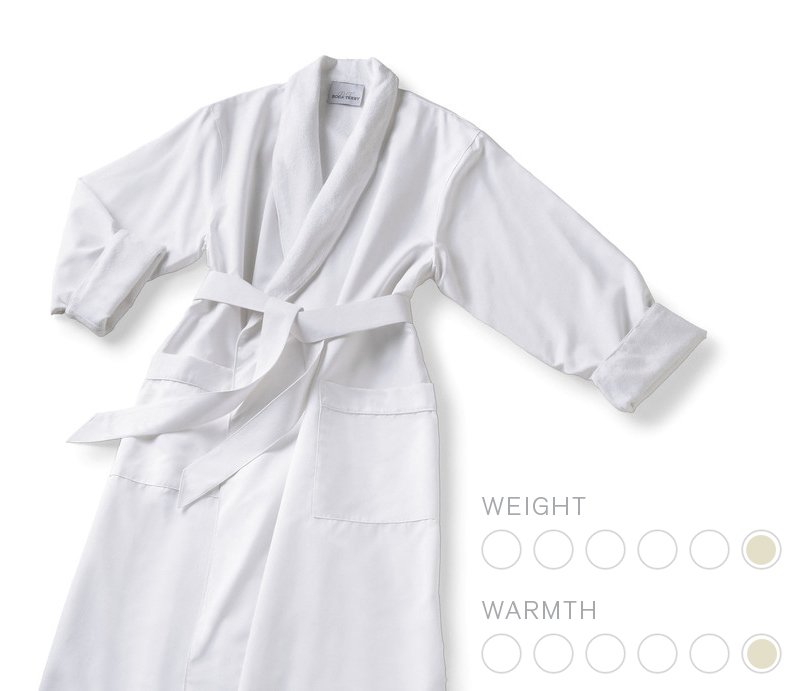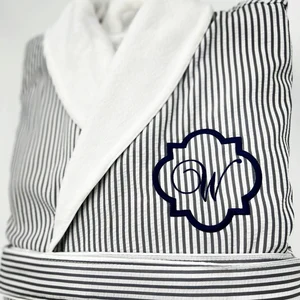Introduction
Choosing the right lining for your robe is crucial. The lining affects comfort, warmth, and style. It serves as the fabric inside the robe, providing a smooth feel against your skin. A good lining can also enhance the robe’s shape and durability.
When selecting a lining, consider the fabric type. Options include cotton, silk, and polyester, each with its benefits. Weight matters, too; lighter fabrics are ideal for summer, while heavier ones suit colder months.
Breathability is another factor. It helps keep you comfortable and dry. Aesthetic appeal also plays a role. The right color and pattern can elevate your robe’s look.
Understanding these aspects will help you choose the perfect lining. It’s not just about looks; it’s about comfort and functionality, too. This guide will walk you through the key factors to consider when selecting a lining for your robe.

What Should You Understand About Robe Linings?
Robe linings are critical components that contribute to both the functionality and aesthetic appeal of a robe. They serve various purposes, from providing comfort to enhancing the robe’s durability and style. Understanding robe linings helps you make informed choices, whether you are designing a new robe or selecting one for personal use.
Purpose of Robe Linings
Robe linings play several key roles.
- Comfort: The lining provides a smooth surface against your skin, reducing irritation from rough outer fabrics.
- Structure: Linings help maintain the robe’s shape and add structure, giving it a more polished appearance.
- Insulation: In colder weather, a heavier lining can offer additional warmth.
- Moisture Management: Breathable linings can wick away moisture, keeping you comfortable, especially in warm conditions.
- Aesthetic Enhancement: A well-chosen lining can add style, color, and pattern to a robe, elevating its overall look.

Historical Context of Robe Linings
Understanding the historical context of robe linings can provide insights into their evolution.
Ancient Times
Historically, robes have been worn in various cultures for thousands of years. Ancient Egyptians wore linen robes for comfort in hot climates, while the Chinese used silk for its luxurious feel. Linings in these robes were often made of the same material as the outer layer, emphasizing continuity in design.
Middle Ages to Renaissance
During the Middle Ages, robes became more ornate. Linings were often made from luxurious fabrics like silk or velvet, reflecting the wearer’s status. These linings not only served aesthetic purposes but also added warmth during colder months.
Modern Era
In contemporary fashion, robe linings have evolved with advancements in fabric technology. Synthetic materials have become popular due to their durability and ease of care. Today, robes are designed with a focus on comfort, style, and functionality, incorporating innovative lining materials that enhance wearability.

What Factors Should You Consider When Choosing Lining?
Factors to Consider When Choosing Lining
Choosing the right lining for your robe involves several important factors. Understanding these aspects will help you make an informed decision.
Fabric Type
The type of fabric you choose for the lining significantly affects comfort and durability. Here are some common options.
- Cotton: Soft, breathable, and easy to care for, cotton is a popular choice. It is hypoallergenic and suitable for everyday use.
- Silk: Offering a luxurious feel, silk is lightweight and breathable but delicate. It’s suitable for special occasions.
- Polyester: Known for its durability and wrinkle resistance, polyester is often more affordable than natural fabrics. It is easy to clean and maintain.
- Bamboo: An eco-friendly and sustainable option, bamboo is naturally antibacterial and moisture-wicking. It provides a soft and comfortable feel against the skin.
Weight and Thickness
The weight and thickness of the lining should match the robe’s intended use.
- Lightweight Linings: Ideal for warmer climates, fabrics like chiffon or lightweight cotton work well.
- Medium Weight Linings: Suitable for transitional seasons, regular cotton or polyester blends can provide comfort.
- Heavyweight Linings: Best for winter robes, fabrics like fleece or quilted linings offer warmth and insulation.
Breathability
Breathability is crucial for comfort. A lining that allows air circulation helps manage moisture and temperature. Natural fabrics such as cotton and bamboo are generally more breathable, while some modern polyester blends offer moisture-wicking properties.
Aesthetic Appeal
The visual aspect of the lining can enhance the robe’s overall look. Consider the color and pattern of the lining.
- Color Coordination: Choose a lining color that complements the outer fabric.
- Patterns and Textures: Patterns can add a fun or elegant touch, while textures can provide depth.
Maintenance and Care
The ease of cleaning and maintaining the lining fabric is another important factor. Look for machine-washable fabrics that can withstand regular washing without losing quality. Some synthetic fabrics resist stains better than natural ones, making them a practical choice.

What Are the Different Types of Robe Linings?
Different types of linings can be used based on your needs and preferences. Here’s a closer look at the most popular options,
Quilted Linings
Quilted linings consist of two layers of fabric stitched together with padding in between. They provide excellent warmth and add a plush, cozy feel to the robe, making them ideal for colder climates.
Satin and Silk Linings
These linings offer a smooth, luxurious finish. They feel soft against the skin and enhance the robe’s appearance, making it more elegant. Satin and silk linings are suitable for formal occasions or loungewear.
Cotton and Jersey Linings
Made from soft cotton or jersey fabric, these linings are natural fibers that are breathable and hypoallergenic. They are comfortable for everyday wear and easy to wash and care for.
Synthetic Linings
Linings made from synthetic materials like polyester are durable and wrinkle-resistant. They are often less expensive than natural fibers and are available in a wide range of colors and patterns.

How Can You Choose the Right Lining for Your Robe?
Selecting the right lining for your robe involves a thoughtful approach. Here are some guidelines to help you decide.
Consider the Robe’s Purpose
Ask yourself what you will primarily use the robe for. If it’s for lounging at home, prioritize comfort with cotton or jersey linings. For sleepwear, choose a soft, breathable fabric like cotton or silk. If you plan to wear it for spa days, look for moisture-wicking linings like bamboo or polyester blends.
Assess Your Climate
Your local climate will influence your choice. In hot weather, opt for lightweight and breathable linings like cotton or linen. For colder weather, heavier, insulated linings such as quilted fabrics or fleece are preferable.
Personal Preferences
Your personal preferences play a significant role in your choice. Consider any allergies or sensitivities you may have. Think about the textures you prefer, as some people might like soft textures, while others might prefer a silky feel.
Budget Considerations
Lining fabrics come at different price points. Affordable options like polyester or cotton blends are usually more economical, while luxury choices like silk or high-end cotton can be pricier but offer a luxurious experience.
What Tips Can Help You with Lining Your Robe?
Choosing and working with robe linings can be straightforward if you keep a few tips in mind:
Mixing and Matching Fabrics
Don’t be afraid to combine different fabrics for a unique look. For example.
- Pair a lightweight cotton outer fabric with a satin lining for a stylish contrast.
- Use a heavier outer fabric with a breathable cotton lining to balance warmth and comfort.
Seek Professional Help
If you’re unsure about sewing the lining yourself, consider hiring a tailor. A professional can ensure a perfect fit and quality stitching while also providing advice on fabric choices.
Test Samples
Before making a final decision, test fabric samples against your skin. This will help you determine.
- Comfort: How the fabric feels against your skin.
- Breathability: If the fabric allows for airflow.
- Appearance: Whether the color and texture meet your expectations.
Think About Color and Pattern
Choose lining colors and patterns that reflect your style.
- Bold Colors: For a statement look, consider vibrant colors that stand out.
- Subtle Tones: For an understated elegance, choose neutral or pastel shades.
- Fun Patterns: Patterns can add a playful touch, making the robe more unique.
Pay Attention to Details
Small details can make a big difference in the overall look of your robe.
- Piping or Trim: Consider adding piping or trim along the edges of the lining for a polished finish.
- Contrasting Thread Colors: Using contrasting thread colors for stitching can enhance visual interest.
Maintenance and Care Tips
To keep your robe looking fresh and new, follow these care tips.
- Read Care Labels: Always check the care labels on both the outer fabric and lining for specific washing instructions.
- Wash with Similar Colors: To prevent color bleeding, wash your robe with similar colors.
- Avoid Fabric Softeners: Fabric softeners can break down certain fabrics, especially synthetics, and may affect the lining’s breathability.
Conclusion
Choosing the right lining for your robe is essential for comfort and style. Start by considering the fabric type. Cotton is breathable, while silk offers luxury. Think about the weight of the lining; lighter fabrics suit warmer weather, while heavier ones provide warmth in winter.
Aesthetic appeal matters, too—choose colors and patterns that complement the outer fabric. Consider maintenance; easy-to-care-for fabrics save time. Finally, test samples against your skin to find what feels best. With these tips, you can select the perfect lining that enhances your robe’s functionality and looks great. Making an informed choice will lead to a robe you’ll love wearing for years.

